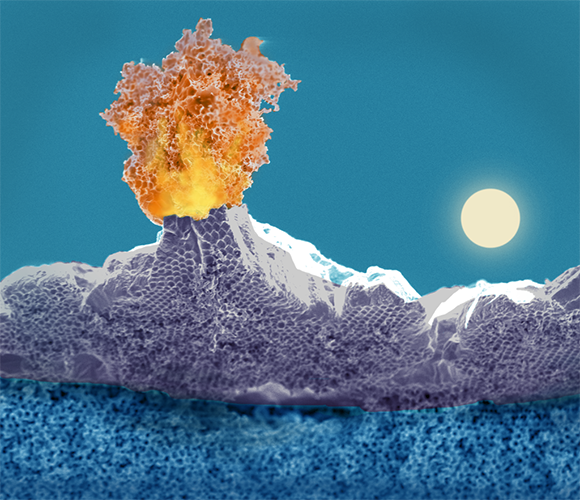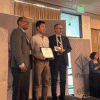Research Paper, Image Win Conference Awards
 July 23, 2018 - A paper written by four engineering graduate students and their adviser won a best paper award at a recent international conference. Mechanical and aerospace engineering doctoral students Quang N. Pham, Shiwei Zhang, Lin Cheng-Hui and Shuai Hao, along with assistant professor Yoonjin Won, won the Best Paper award in the Emerging Technologies and Fundamentals category at IEEE ITHERM, the Intersociety Conference on Thermal and Thermomechanical Phenomena in Electronic Systems. The event was held in San Diego, May 29-June 1.
July 23, 2018 - A paper written by four engineering graduate students and their adviser won a best paper award at a recent international conference. Mechanical and aerospace engineering doctoral students Quang N. Pham, Shiwei Zhang, Lin Cheng-Hui and Shuai Hao, along with assistant professor Yoonjin Won, won the Best Paper award in the Emerging Technologies and Fundamentals category at IEEE ITHERM, the Intersociety Conference on Thermal and Thermomechanical Phenomena in Electronic Systems. The event was held in San Diego, May 29-June 1.
The team’s paper, “Boiling Heat Transfer Performance of Three-dimensionally Ordered Microporous Copper with Modulate Pore Diameters,” examines how a material’s pore sizes and thicknesses affect the process of boiling heat transfer.
“Boiling is nature’s way of using liquid to cool things down,” says Pham, the paper’s lead author. “Scientists over the last half of the century have been trying to make surfaces boil better. The more efficiently a surface boils, the more heat it gets rid of to prevent unwanted overheating.”
Engineers have tried designing microporous surfaces to maximize heat transfer performance, but these structures have random molecular arrangements, limiting how much information about boiling they can produce. The Samueli School research team created a surface with a porous, well-ordered architecture, which allowed them to systematically study how this arrangement affects the heat transfer at boiling. “From our work, we hope to profoundly alter our fundamental understanding of the boiling phenomenon,” Pham says of the research, which is supported by the National Science Foundation Thermal Transport Processes program.
Pham, a doctoral candidate in materials and manufacturing technology, also won the Art in Science Award for his image of an eruption from a multilayered copper inverse opal. Inverse opals are crystalline metallic porous structures with extremely consistent molecular arrangements.
In the course of his research, he took a scanning electron microscopy image of one of the copper inverse opals he had created. Instead of the uniform microstructures he was expecting to see, he saw “really strange features on the surface, and one of them looked like an erupting volcano.” Pham photographed the image, and then filled in the colors using Photoshop. “I guess sometimes the mistake samples make for the most interesting pictures,” he says.
-Anna Lynn Spitzer

